Have you ever eaten a sandwich that is as big as your head? If you have had a pork tenderloin sandwich, you have come close. The tenderloin sandwich was created in Nick’s Kitchen in Huntington, Indiana in 1904. It subsequently grew in popularity throughout Iowa and Missouri. It is a fabulous sandwich, but like many food dishes, was adapted from something else. The inventor Nick Freienstein grew up with parents from Germany. It’s not hard to imagine that he grew up eating Wiener Schnitzel. The popular Austrian dish is made with veal that is pounded, breaded and pan fried. However, the pork tenderloin sandwich is made with pork that is pounded, breaded with saltine crackers and then deep-fried. It is served on a bun one-third the size of the tenderloin with mustard, pickles, tomato, lettuce and mayo.
Fried Pork Tenderloin Sandwich
Serves 4
Salt and pepper as needed for meat
1 cup flour
1 teaspoon salt
1 teaspoon pepper
1 teaspoon oregano
2 eggs
1 cup milk
1 to 2 cups breadcrumbs or crushed saltine crackers
4 hamburger buns
Mayo, mustard, shredded lettuce and pickles as desired
Butterfly pork chops by cutting from a wider side about ¾ of the way through. There still needs to be a small amount of pork (about the thickness of the cut side) that is still attached. Place a few pieces of plastic wrap on the cutting board, place the open porkchop in the center, then cover with a few more layers of plastic wrap — you can also place the butterflied pork chop inside of a gallon Ziploc bag. Using a meat mallet or small saute pan to pound the meat until it is about ⅛ inch thick. Season each side lightly with salt and pepper.
In a shallow vessel, mix salt, pepper and herbs into flour. Lightly coat each side of the tenderized pork chop in the flour mixture, shaking off all excess.
In a shallow vessel, mix the egg with milk and season with salt and pepper. Lightly coat each side of the floured pork chop in the mixture, make sure to let all excess drip off.
Place the breadcrumbs or crumbled saltines in a shallow vessel, coat each side of the pork chop with breading, pressing it into the chop to stick. Shake off all excess and reserve to fry.
Heat up a saute pan with about 1 inch of oil until it starts to shimmer slightly. Dip an edge of a breaded pork chop into the oil. You want a medium bubble from the breading to fry. (About 350-365 degrees if you have a frying thermometer.) If the bubbles are too high, allow the oil to cool slightly. If the bubbles are too low, allow the oil to heat a little longer. Fry on each side until golden brown. Remove from the oil and rest on paper towels to soak up excess oil. Assemble sandwich and serve. Don’t be alarmed, but the cooked piece of pork will be at least 2 or 3 times the size of a normal bun.
Breading
When frying, many meats need a protective coating. (French fries come with their own built-in starch coating.) This normally is achieved by batter or breading. The coating protects the surface of the meat, holds in moisture and creates an excellent contrast of texture with a crust. You can go back and forth with the marinade and flour as many fried chicken recipes do or use the standard breading procedure like this recipe: flour, egg wash and breadcrumbs. It seems like a very simple process — it is — but each must be done in a way that prepares the meat for the next step.
Flour
The meat should be seasoned; this will create moisture that comes to the surface. The seasoned flour will stick to this moisture, which allows the next step to work.
Egg Wash
This mixture will stick to the thin layer of flour that is on the meat. You only want a thin layer of egg wash to stick, otherwise, it will clump up with the next step and fall off.
Breadcrumbs
This final step sticks to the thin layer of egg wash and creates a dry outer layer. This step is always called “breadcrumbs,” but depending on the product and your part of the country, this could be a variety or mixture of items. Cornmeal, corn flakes, club crackers, or as we Midwesterners see commonly with pork tenderloin, saltine crackers. It helps to give a little added pressure to get this layer to stick but the rule of shaking off the excess still applies. If it does not stick to the meat willingly, then it will more than likely come off during the frying process.
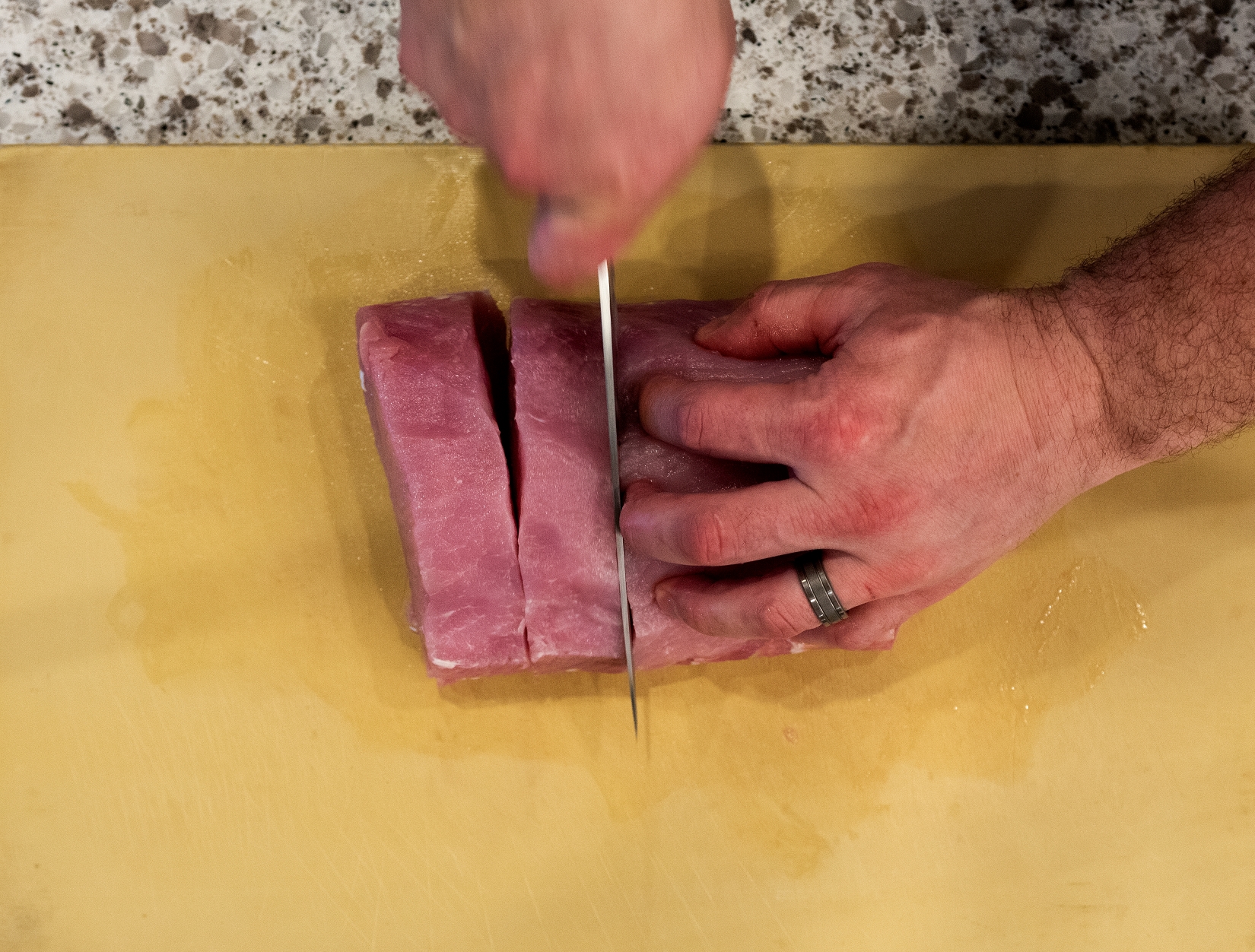
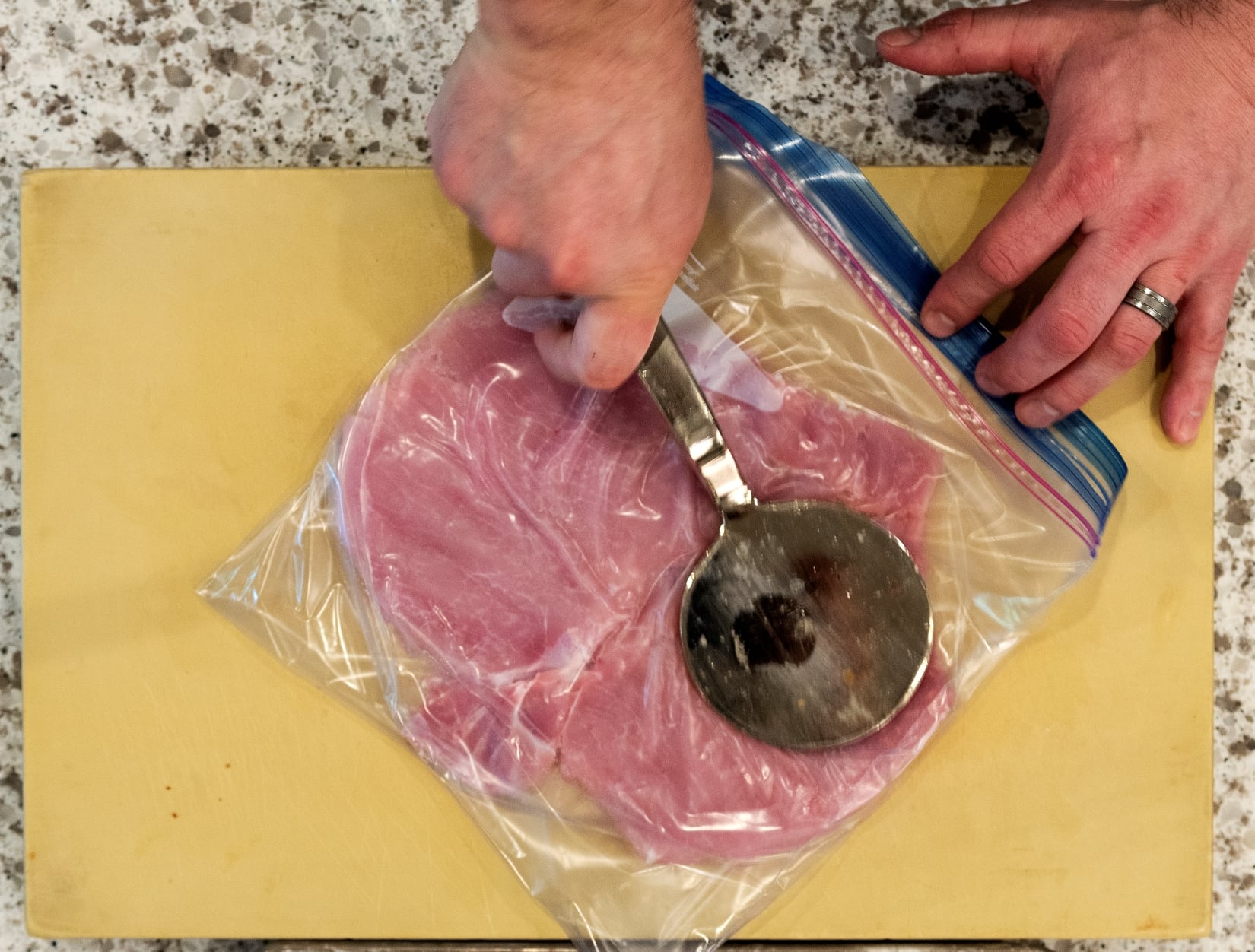
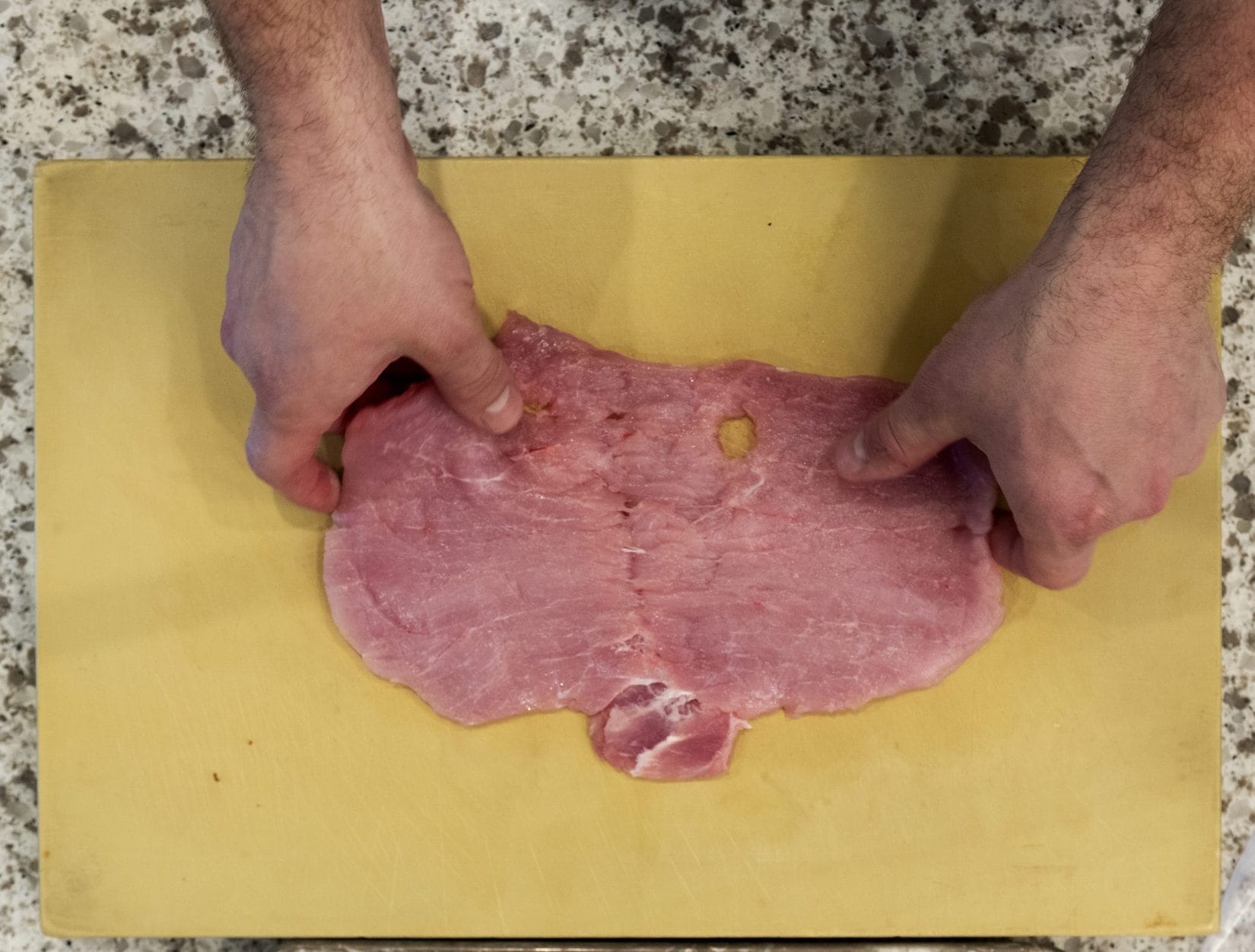
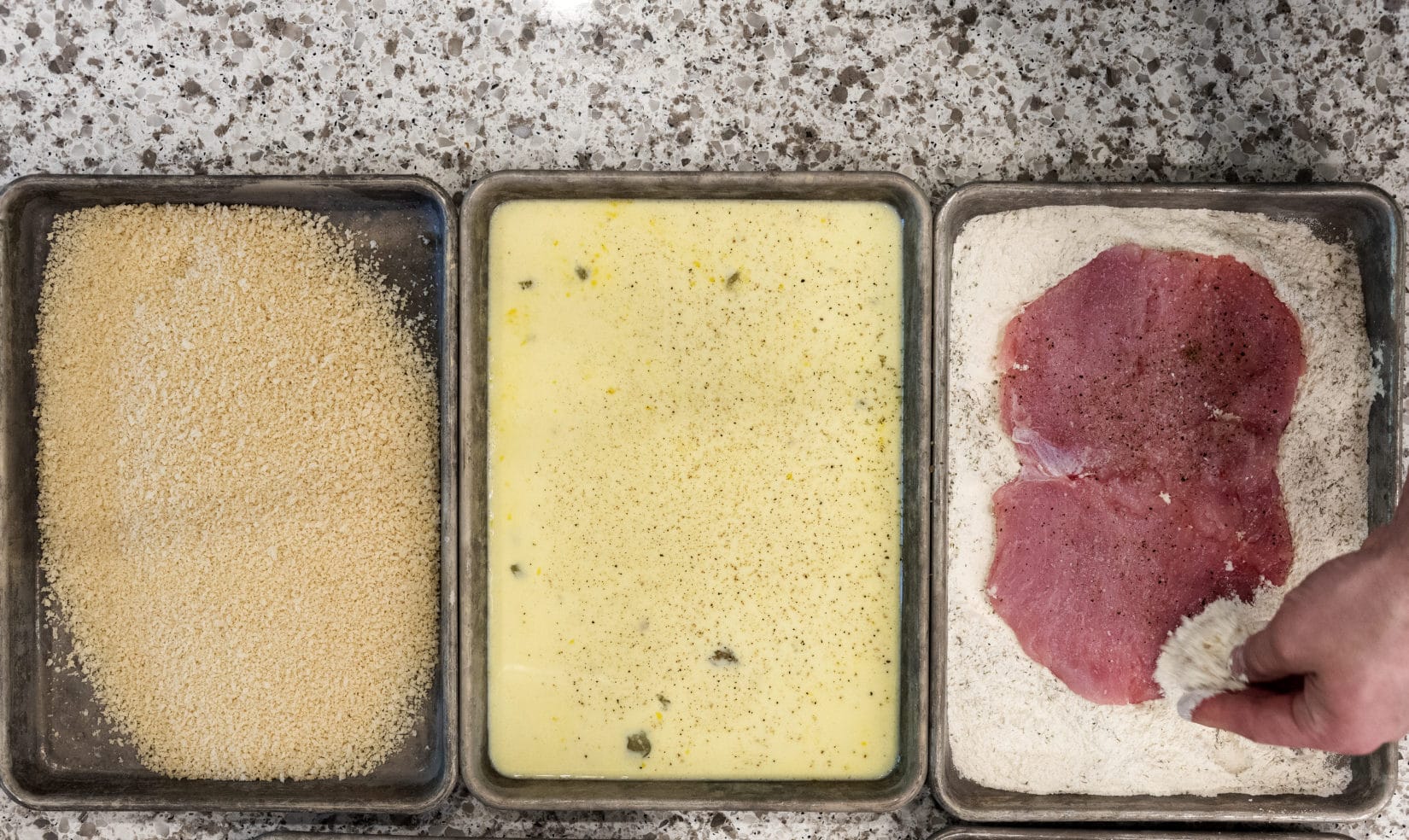
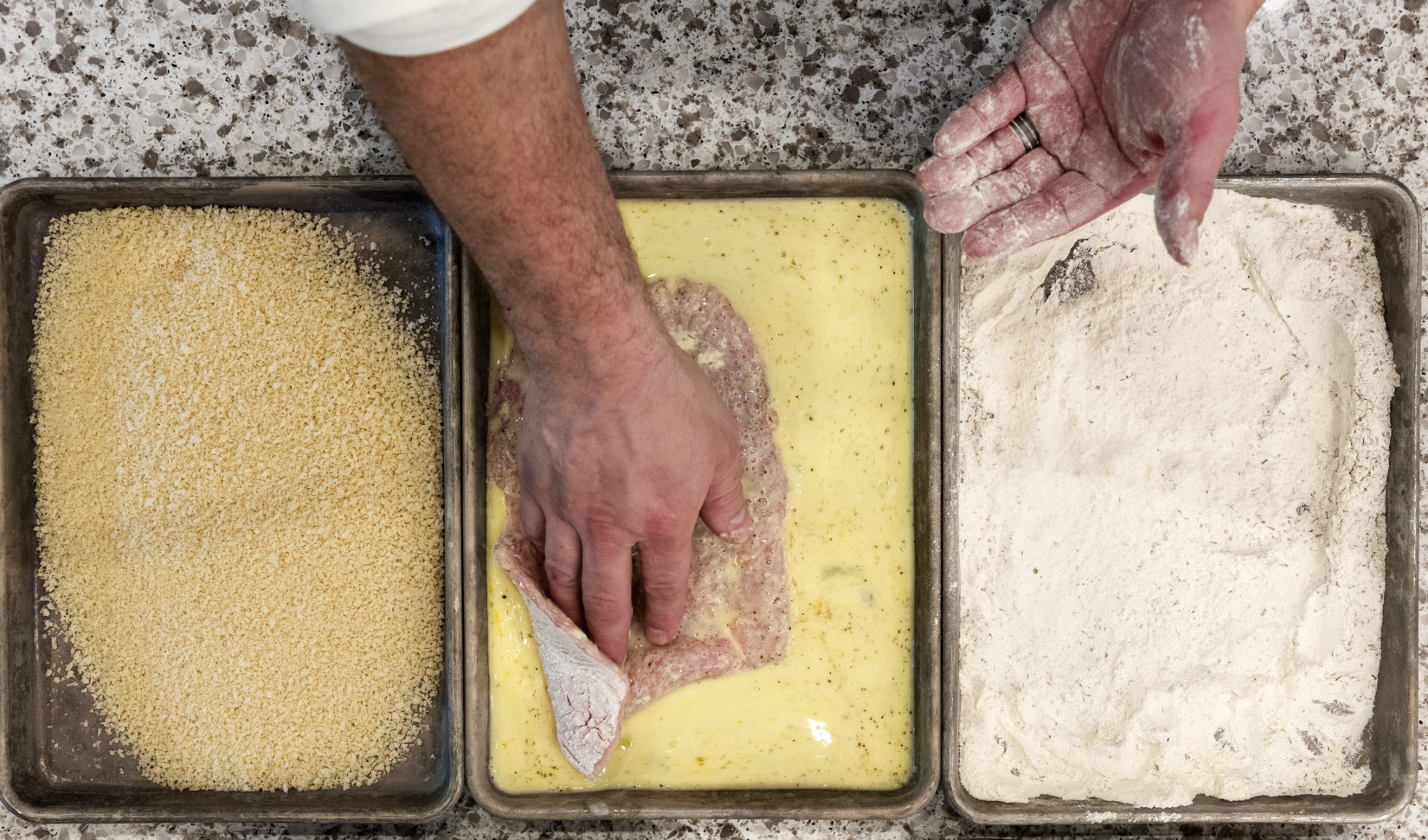
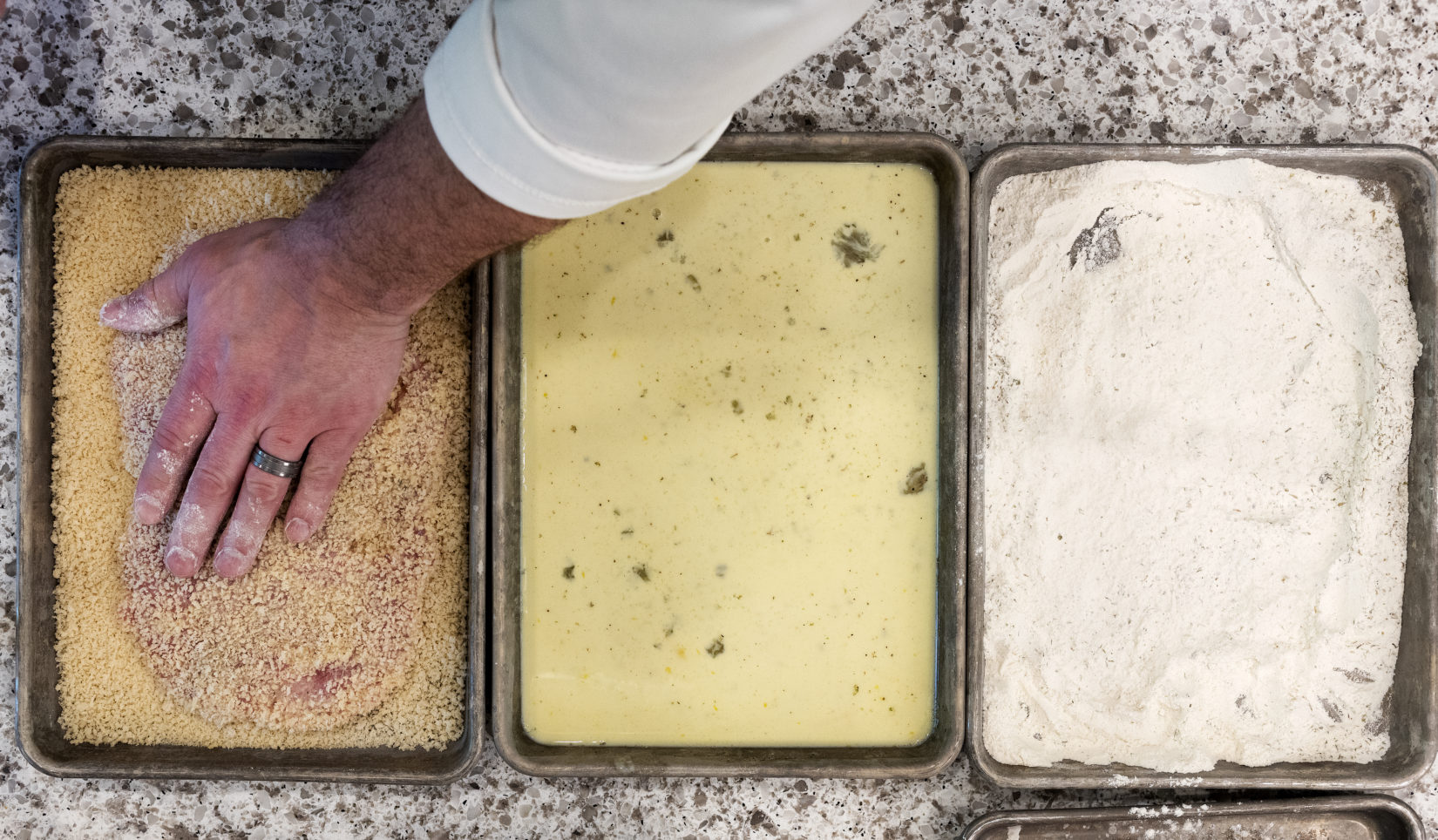
Frying
Traditionally the breaded pork chop is deep-fried, but that is mostly out of convenience for the restaurant — the deep fryer is typically always on during service. However, when cooking at home, it is probably much easier to pan-fry. If you have a frying thermometer (one for frying and candy making that goes up to about 400 degrees Fahrenheit), you can use it to you tell you how hot the oil is. You want to fry about 350 to 365 degrees or you can use the reaction of the breading to tell you roughly what the temperature is. Watch for a shimmer in the oil, this may take 5-7 minutes depending on how large your pan is and how much oil you are using. Once you see the shimmer, barely place the edge of the breaded pork chop. You want to see a medium bubble from the moisture in the breading. If the bubble is too rapid, the outside will cook too quickly and leave the inside raw. You need to allow the oil to cool. A bubble that is too small means the inside will cook too slowly, the outside will not form and end up soaking up oil instead of forming a crust.
Dressing
Traditionally the sandwich is served with lettuce, tomato, onion and mayo with a side of pickles. You can spice it up or dress it down, as you like. Many traditional Weiner Schnitzel recipes are only served with a wedge of lemon as a side. It is the last-minute squeeze of fresh lemon juice that gives the dish a burst of acid helps balance the heavy crust and bring out the flavor without a copious amount of salt.

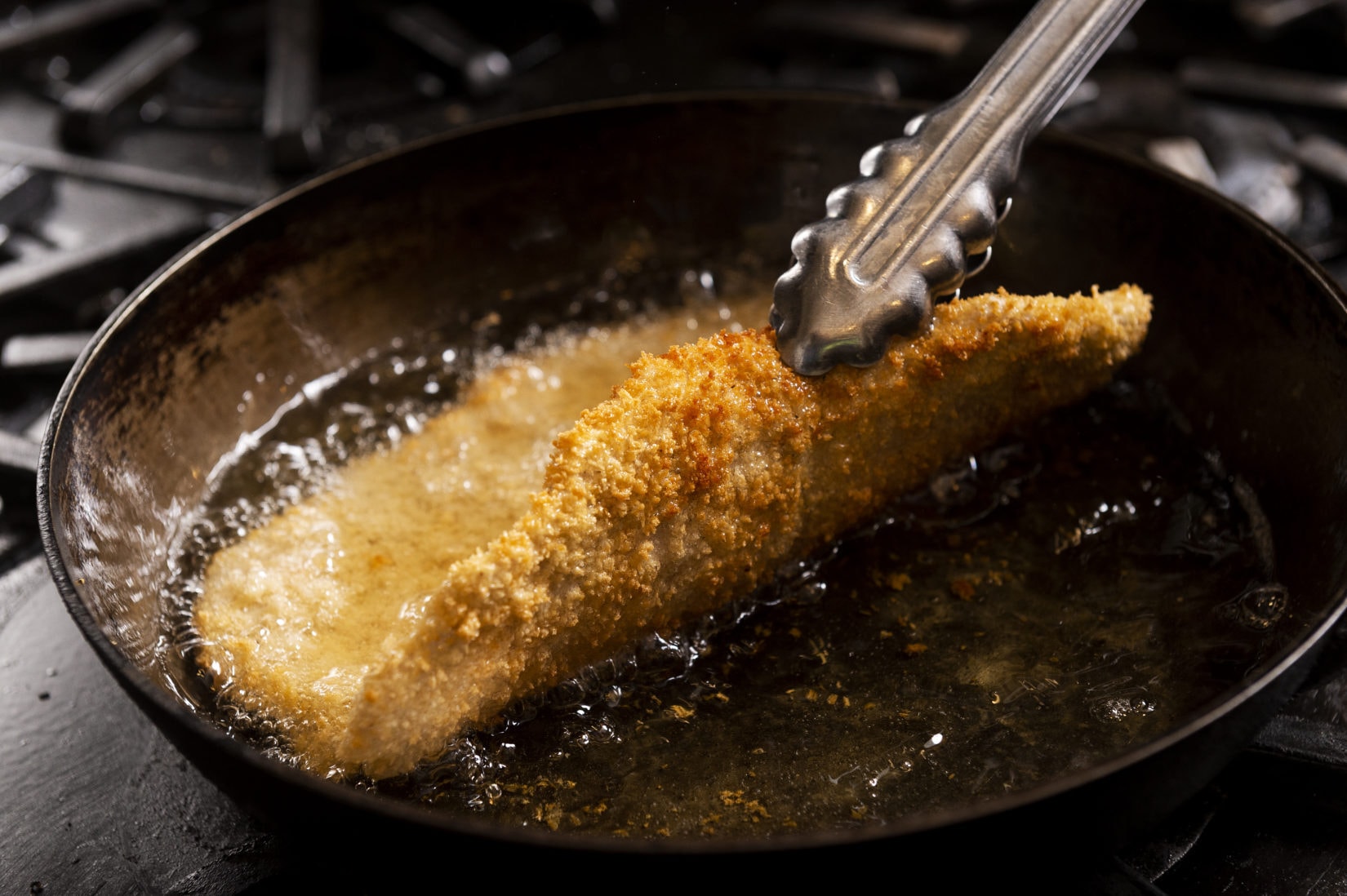
I have had a long-standing debate with friends that this is false advertising. The pork tenderloin sandwich is not made with pork tenderloin but with the pork loin. The pork loin is located along the back of the hog, below the shoulder and before the ham. The tenderloin is located on the inside of the carcass, in the lower back. It is about an eighth the size and is not a heavily used muscle, thus making it very tender. We have concluded that more than 100 years ago someone made a typo. There must have originally been a space in the name; pork tender loin, alluding to the fact that the loin or pork chop from the loin was tenderized with a meat mallet. Somewhere along the line, they must have omitted the space causing the confusion. Even though there is a little confusion with the name, it is still a delicious sandwich.

Brook Harlan is a graduate of the Culinary Institute of America in Hyde Park, New York. He is a culinary arts instructor at the Columbia Area Career Center.


